
|
E-M1 Mk.II High-Res Mode Part 2 |

| My other articles related to the Olympus OM-D System. |
|
This is a continuation of another article on the same subject: E-M1 Mk.II High-Res Mode, posted earlier this year. While that article explains the sensor-shift technique and provides a discussion of some image samples, those are limited to the baseline HR size, a resolution of 50 MP. This part adds Super High Res image samples converted to 80-megapixel RGB images. See the comparison table of all formats in the main article. An additional image sample page High-Res photographs shot with the Leica DG 8-18/2.8-4.0 lens by Panasonic.
| Let me stress that the difference between 50 and 80 MP resolution is limited to the final interpolation only, where two RGB arrays, diagonally shifted by half-pixel-pitch in each direction, are merged into a single array with a smaller step and larger number of elements (logical pixels). It is JUST the size of that array which is different in SHR than in HR. For an 80MP output, this procedure seems to take lots of CPU power: when done with Olympus Viewer, it uses two minutes per picture on my i7 laptop. With this computational load, it would be impractical to generate 80MP JPEGs in-camera. I have strong reasons to suspect that the current dual approach, somewhat kludgy but harmless, is a result of existing technical limitations, not a design goal by itself. One day it may go away. Is doubling of the resolution in SHR images (as compared to standard ones) just a publicity stunt, without a technical rationale behind it? I don't think so (and I am a professional skeptic, mind it!). The information gathered in High Res Mode is eight times larger than that in the regular process: four readings per pixel multiplied by two grids. On the other hand, the information stored in the SHR (80MP) file is just four times larger. From the information theory viewpoint it makes sense. Of course, the whole advantage may be (and, most probably, is) erased by other technical limitations, but that's another story. (I am also dismissing the difference in color depth between raw and RGB format; it does not matter here.) The First Question The first question I want to answer in this installment is: does the 80-megapixel resolution bring any additional detail-rendering capability? For this, I'm performing a comparison of all three images (as listed above) generated from the same exposure. This makes comparing them easier, because if there is any focus inaccuracy or camera shake, all three versions will be equally affected. I will be doing this for two different lenses, in two next sections of this write-up. For each lens I was shooting five pictures, using the 50MP JPEG to pick the best (or, at least, not the worst) one for further analysis; a protection against bad-luck outliers. I chose, again, to use my paper money setup for this. Now, presentation of the results. In each case, the first row of images are full frames, turned 90° and reduced in size, with the 1:1 sample area (see below) marked in red. The second row shows 1:1 crops from original full images. Obviously, they differ because of different pixel image sizes. Looking at these, we have to remember that, for the same printing/viewing size, the HR and (especially) SHR images will need less magnification, therefore the apparent sharpness of standard-resolution images is greatly misleading. That's what the third row is for: the first two samples here are magnified to match the size of the third (SHR) one. This may be the most meaningful comparison, although it has its own caveats (some loss of sharpness due to upsampling process on one side, but also some sharpening being a part of that process on the other). Still, after trying a number of resize/sharpen combinations, I believe this is the best I could come with. Update: There is now another, fourth row in each set now, not present in the previous article. It contains the third-row samples, additionally submitted to some sharpening to look best (in my subjective evaluation). The Focus Magic filter was used fot that, set to the strength of 2. By now, everybody should know that this is one of the best μFT zooms. In Part 1 of this series I might have shortchanged it a bit, comparing its performance at 100 mm against the ZD 50/2.0 Macro legacy prime. I should have used a mid-range length instead; we know that such zooms usually perform worst at the long end. We will return to this subject later. For now, the comparison between three image resolutions, obtained from the same shot. For this, we have set the focal length to 66 mm. |
|
Standard Resolution: 20 MP
[full frame] |
High Resolution: 50 MP
[full frame] |
Super High Resolution: 80 MP
[full frame] | |
-1.r.jpg)
[5.1] |
-2.r.jpg)
[5H.1] |
-3.r.jpg)
[5SH.1] | |
|
Full frames, reduced in size, with sample origins shown.
Aperture priority (+.3 EV): 1/15 s at F/7.1, ISO 200, Reference WB | |||
-1.f.jpg)
[5.2] 1:1 sample from the original |
-2.f.jpg)
[5H.2] 1:1 sample from the original |
-3.f.jpg)
[5SH.2] 1:1 sample from the original | |
-1.g.jpg)
[5.3] As above, upsampled to 80 MP |
-2.g.jpg)
[5H.3] As above, upsampled to 80 MP |
-3.f.jpg)
[5SH.2] As above, no changes | |
-1.h.jpg)
[5.4] As above, sharpened |
-2.h.jpg)
[5H.4] As above, sharpened |
-3.h.jpg)
[5SH.4] As above, sharpened | |
|
Now, we have a surprise here. Going from Standard to High Resolution we see what we expected: a clear advantage of HR. But SHR does not show any visible improvement over HR (despite the 25% upsampling of the latter); in some places the ink patterns even seem less detailed, if very subtly. The same can be said about samples submitted to sharpening (the last row). This will only make looking at another sample set more exciting. If any lens I have is capable of showing a difference between HR and SHR, it will be this one: a Four Thirds legacy lens, used with a FT->μFT adapter. Let's have a look. |
|
Standard: 20 MP [full frame] |
High Resolution: 50 MP [full frame] |
Super High Resolution: 80 MP [full frame] | |
-1.r.jpg)
[6.1] |
-2.r.jpg)
[6H.1] |
-3.r.jpg)
[6SH.1] | |
|
Full frames, reduced in size, with sample origins shown.
Aperture priority (+.3 EV): 1/15 s at F/7.1, ISO 200, Reference WB | |||
-1.f.jpg)
[6.2] 1:1 sample from the original |
-2.f.jpg)
[6H.2] 1:1 sample from the original |
-3.f.jpg)
[6SH.2] 1:1 sample from the original | |
-1.g.jpg)
[6.3] As above, upsampled to 80 MP |
-2.g.jpg)
[6H.3] As above, upsampled to 80 MP |
-3.f.jpg)
[6SH.2] As above, no changes | |
-1.h.jpg)
[6.4] As above, sharpened |
-2.h.jpg)
[6H.4] As above, sharpened |
-3.h.jpg)
[6SH.4] As above, sharpened | |
|
Nope. Zip, nilch, nada. A jump from Standard to HR and then nothing between that and SHR. Actually, the latter shows, again, a (possible) slight drop in both sharpness and local contrast. The SHR Puzzle This only makes things more interesting. Two possible explanations come to mind:
My gut feelings hint at the second explanation; so do some semi-legitimate arguments. I will not rush to any conclusions yet, although at the moment (and based on these samples) I see no advantages of using 80MP images (SHR) over 50MP ones (HR). Before we make such strong statements, let us check a few more things. |
|
Back to the 7th Floor | |
|
Here is my 7th floor balcony scene from Poland, with a Raw+JPEG save resulting in all three image sizes.
The picture at the right is the 80MP image, reduced in size, and showing the areas from which the two 1:1 samples were taken. One of the samples was selected from a brightly lit roof area, another — from a rather deep shade. Note the fuzzy lady artifact in the second sample, interesting but irrelevant for our investigation. Samples in Rows 2 and 4 below were upsampled using FastStone this time, not the PSP X9 as usual. This was to see if the upsampling process (which usually includes some re-sharpening) makes any difference. It doesn't. |
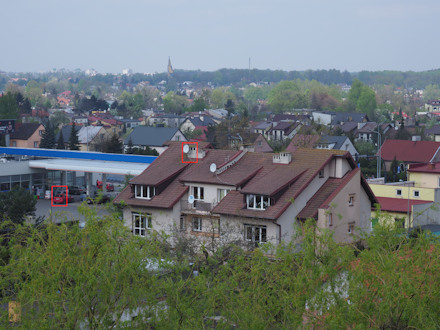
E-M1 Mk.II, MZD 12-100/4.0 @ 50 mm
|
|
Standard: 20 MP [full frame] |
High Resolution: 50 MP [full frame] |
Super High Resolution: 80 MP [full frame] | |
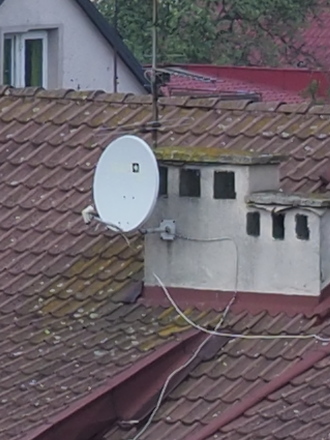
[7.2] 1:1 sample from the original |
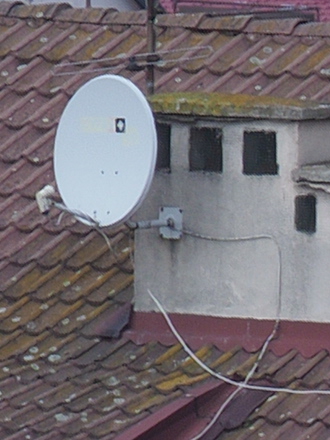
[7.H.2] 1:1 sample from the original |
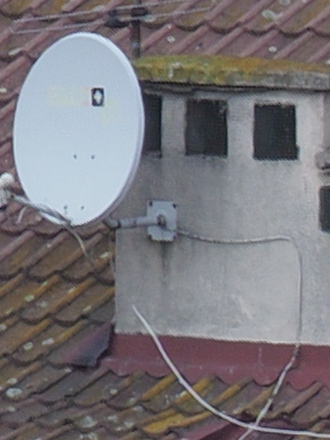
[7.SH.2] 1:1 sample from the original | |
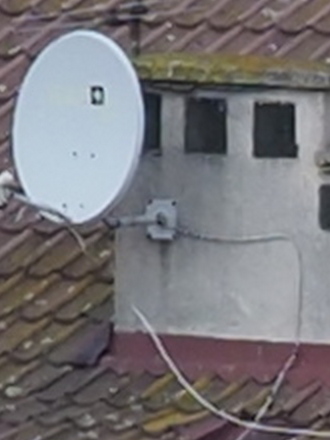
[7.3] As above, upsampled to 80 MP |
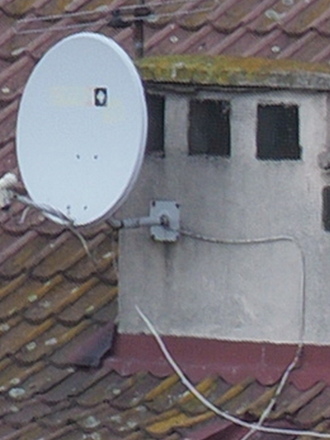
[7.H.3] As above, upsampled to 80 MP |

[7.SH.2] As above, no changes | |

[8.2] 1:1 sample from the original |
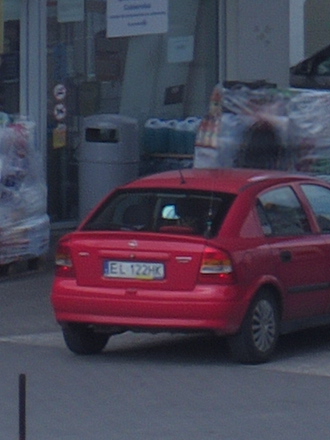
[8.H.2] 1:1 sample from the original |
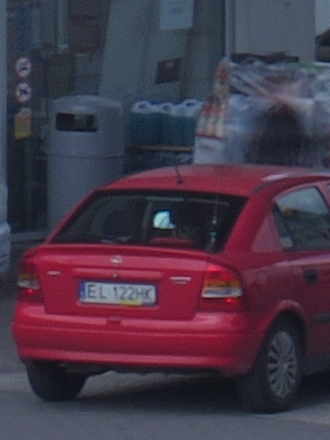
[8.SH.2] 1:1 sample from the original | |

[8.3] As above, upsampled to 80 MP |
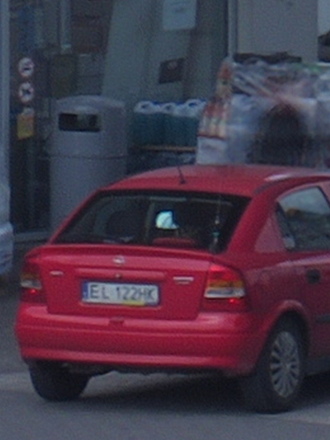
[8.H.3] As above, upsampled to 80 MP |

[8.SH.2] As above, no changes |
|
Again, the Super High Res image stubbornly refuses to add any detail or sharpness to the picture. And, again, The 50MP (HR) version seems to show just a slight (but visible) advantage over SHR in sharpness and local contrast. Let us have a look at that. The four samples below allow us to compare the SHR image (rightmost) against HR one, upsampled to the same scale (and resharpened) in three different ways. Captions show the upsampling application and resharpening applied. This comparison may be helpful in determining if our comparison of upsampled HR against straight SHR is not distorted by the upsampling process itself. |
| Upsampled HR (50MP) | Upsampled HR (50MP) | Upsampled HR (50MP) | Super HR (80MP) | |
.f2!.jpg)
Paint Shop Pro X9
|
.f2!.jpg)
Paint Shop Pro X9
|
.f2!.jpg)
FastStone 6.2
|
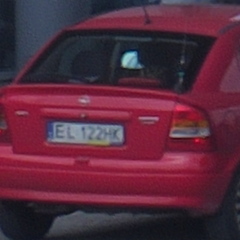
Upsampling: None
|
|
This makes sense: the samples differ only minimally, and follow a logical pattern. The first one, as expected, is (very slightly) fuzzier than the rest, the second and third are sharper, and the fourth one is in-between both extremes. Most importantly, none of these differences, due to various upsampling procedures, are of any practical significance, comparable to those between Standard and High Resolution. This means that our results are not affected in any significant degree by the upsampling/resharpening procedure used. I'm deeply relieved. Now, at the long last, I can announce... The Bottom Line The 80-megapixel image size introduced as an option to the High Res Mode does not, actually, offer any visible advantages in detail rendition. The 80MP image files do not discernibly differ from 50MP ones upsampled to that size. This may, however, change if any part of the system (lenses, imager, stabilization, processing) is upgraded or tweaked; the format will be then ready to accept the improved output. This may be understood as future-proofing the system. As a matter of fact, I would consider dropping the current 50MP format whenever this becomes technically feasible (i.e., 80MP file can be generated in-camera). Sooner or later it will. In my panorama experiment I saw indications of 80MP images holding more detail than 50MP ones. This study revealed that to be a false first impression. A note on the subject has been inserted in the original article. Appendix: A ZD Macro vs. MZD Pro Rematch Just to satisfy my own curiosity, let me rearrange some of the samples shown above so that we can easily compare both lenses side-by-side. This time we use the MZD 12-100/4.0 Pro at 66 mm, where its performance should be better than at 100 mm, chosen in Part 1. For this comparison we are using 50MP (HR) images. Remember that each sample is from the best pick out of five, so we are reasonably protected from bad luck. |
|
ZD 50/2.0 Macro [full frame] |
MZD 12-100/4.0 Pro @ 66 mm [full frame] | |
-2.r-.jpg)
|
-2.r-.jpg)
| |
|
Full frames, reduced in size, with sample origins shown.
Aperture priority (+.3 EV): 1/15 s at F/7.1, ISO 200, Reference WB | ||
-2.f-.jpg)
1:1 sample from the original |
-2.f-.jpg)
1:1 sample from the original | |
|
This is soooo close. It is not easy to say which lens performs better here. While I would like to think that the ZD 50/2.0 Macro has a small edge in this competition, most of the time it looks the other way around — even if by a very tiny margin. |

| My other articles related to the Olympus OM-D System. |
| This page is not sponsored or endorsed by Olympus (or anyone else) and presents solely the views of the author. |
| Home: wrotniak.net | Search this site | Change font size |
| Posted 2017/05/15; last updated 2019/04/15 | Copyright © 2019 by J. Andrzej Wrotniak |